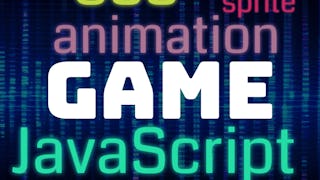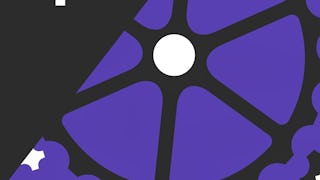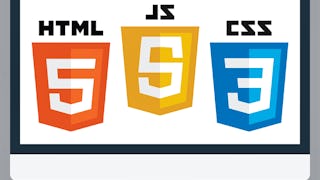This course offers a comprehensive understanding of web development, concentrating on essential server-side techniques. Topics include the HTTP protocol for browser-server communication, various methods of interaction between browsers and servers, and approaches for web application development.

Enjoy unlimited growth with a year of Coursera Plus for $199 (regularly $399). Save now.

Recommended experience
Skills you'll gain
Details to know

Add to your LinkedIn profile
6 assignments
See how employees at top companies are mastering in-demand skills

There are 6 modules in this course
In this module, you will learn the fundamental HTTP process, which isessential for understanding browser-server communication. You will also discover how to build a web server using Node.js. Given the significant role of JSON in this communication, we will provide a brief introduction to it at the beginning of the module. Additionally, the module will conclude with a discussion on using HTML forms for sending information to the server.
What's included
13 videos8 readings1 assignment
In this module, you will learn how to use JavaScript promises and their associated programming techniques. You will apply these promises with AJAX, a method for acquiring server resources asynchronously. Next, you will be introduced to Single Page Applications (SPAs) and Multi-Page Applications (MPAs), two different approaches to building web applications. You will gain hands-on experience by exploring an example of building an SPA using AJAX and a Node.js web server.
What's included
13 videos7 readings1 assignment1 peer review
In this module, you will be introduced to cookies, which enable you to store small pieces of data in the browser. You will also learn how to use cookies in server-side programs, with Node.js web servers as examples. By working with cookies, you will discover methods for implementing web authentication in web applications. Finally, in addition to cookies, you will explore an alternative approach to storing information inside browsers.
What's included
14 videos7 readings1 assignment1 peer review
In this module, you will learn about WebSocket and RESTful APIs, two essential technologies for web development. You will explore WebSocket for real-time communication between browsers and servers, utilizing Socket.IO for practical implementation in Node.js. Additionally, you will be introduced to RESTful APIs, with a focus on various HTTP methods and their applications through a practical example involving a library system.
What's included
13 videos5 readings1 assignment1 peer review
In this module, you will deepen your understanding of HTML forms, specifically focusing on using the POST method to handle file uploads and multi-part content in an Express web server. You will also get started with PHP, learning to write basic code, such as variables, control structures, and arrays. Finally, you will explore how PHP can be utilized to develop a RESTful server, building on an example covered in the previous module.
What's included
10 videos6 readings1 assignment
In this module, you will learn how to build a Multi-Page Application (MPA) using template engines and the Model-View-Controller (MVC) architecture. You will explore the EJS template engine and how to pass variables to views for dynamic content generation. Additionally, you will gain practical experience in developing a web application using the MVC framework, through a stage-by-stage development of an example stock application.
What's included
11 videos5 readings1 assignment1 peer review
Instructor

Explore more from Mobile and Web Development
 Status: Preview
Status: PreviewThe Hong Kong University of Science and Technology
 Status: Free Trial
Status: Free TrialBoard Infinity
 Status: Free Trial
Status: Free Trial Status: Free Trial
Status: Free TrialJohns Hopkins University
Why people choose Coursera for their career





Open new doors with Coursera Plus
Unlimited access to 10,000+ world-class courses, hands-on projects, and job-ready certificate programs - all included in your subscription
Advance your career with an online degree
Earn a degree from world-class universities - 100% online
Join over 3,400 global companies that choose Coursera for Business
Upskill your employees to excel in the digital economy
Frequently asked questions
To access the course materials, assignments and to earn a Certificate, you will need to purchase the Certificate experience when you enroll in a course. You can try a Free Trial instead, or apply for Financial Aid. The course may offer 'Full Course, No Certificate' instead. This option lets you see all course materials, submit required assessments, and get a final grade. This also means that you will not be able to purchase a Certificate experience.
When you purchase a Certificate you get access to all course materials, including graded assignments. Upon completing the course, your electronic Certificate will be added to your Accomplishments page - from there, you can print your Certificate or add it to your LinkedIn profile.
Yes. In select learning programs, you can apply for financial aid or a scholarship if you can’t afford the enrollment fee. If fin aid or scholarship is available for your learning program selection, you’ll find a link to apply on the description page.
More questions
Financial aid available,

